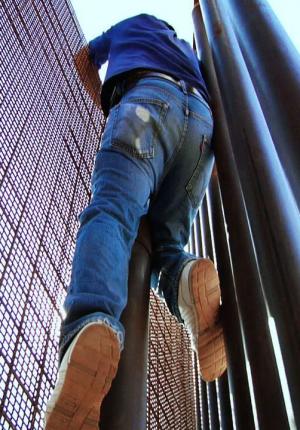Films
Année 2011
Catégorie Long métrage documentaire
Durée 80 min
Origine Québec, Mexique
Langue espagnole, anglaise
Synopsis
Il s’étend sur une centaine de kilomètres, séparant de son horizon de pierres le Mexique et les États-Unis. Dans la petite ville frontalière Agua Prieta, Betto dirige un centre de services aux migrants déportés, et Raoul est le directeur d’un centre de désintoxication. De l’autre côté du mur, du côté américain, Luis est un Mexicain en exil et Ted, un artiste engagé. Ces quatre personnes vont nous servir de points de repère pour mieux saisir la réalité des flux migratoires. Poétique mais sans complaisance, El Viaje Silencioso pose également son regard sur ces hommes et ces femmes qui rêvent d’une vie meilleure et sont parfois prêts à tout sacrifier pour l’atteindre. Dans son premier long-métrage, Marie-Eve Tremblay s’interroge sur la notion de rêve américain tout en rendant hommage au courage et à la dignité de ces migrants et en donnant un visage humain et touchant à ces questions souvent abordées de façon plus abstraite.
Extending for a hundred kilometers, a stone wall bluntly separates Mexico and the United States. In the small border town of Agua Prieta, Betto runs a service centre for deported migrants and Raoul is the director of a detox facility. On the other side of the wall, Luis is a Mexican living in exile and Ted is an activist artist. These four people serve as our guides to a better understanding of the realities of migration. Poetic but unflinching, El Viaje Silencioso also looks at the men and women who dream of a better life, and who sometimes sacrifice everything to get it. In her first feature, Marie-Eve Tremblay questions the idea of the American Dream and pays tribute to the courage and dignity of the migrants, giving a human, emotionally rich face to questions too often seen in abstract terms.
Réalisation

Marie-Eve Tremblay
Native du Lac-Saint-Jean, Marie-Eve Tremblay a étudié à l’École de cinéma Mel Hoppenheim. Réalisatrice du long métrage Viaje silencioso, elle a également travaillé pour les compagnies de production Amazone Films et EyeSteelFilm.
Équipe
-
Marie-Eve Tremblay
Production
-
marie-eve tremblay
Distribution
-
Marie-Eve Tremblay
Scénario
-
Vincent Biron
Direction de la photographie
-
Marie-Eve Tremblay
Montage
-
Guillaume Cavalière Beranek
Son
Voir toute l'équipe

